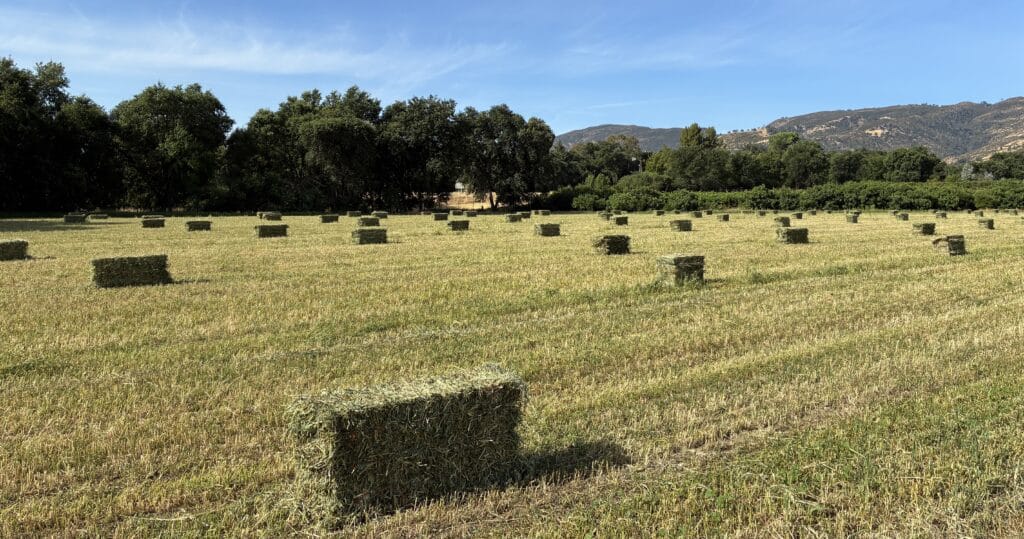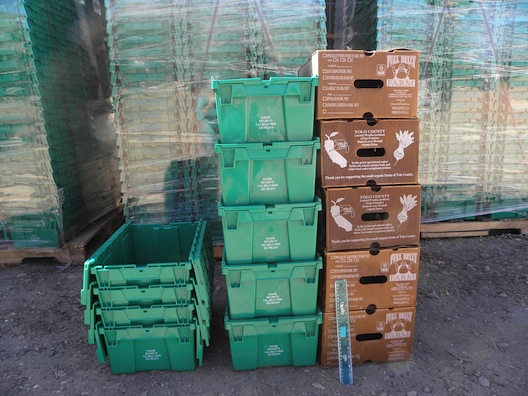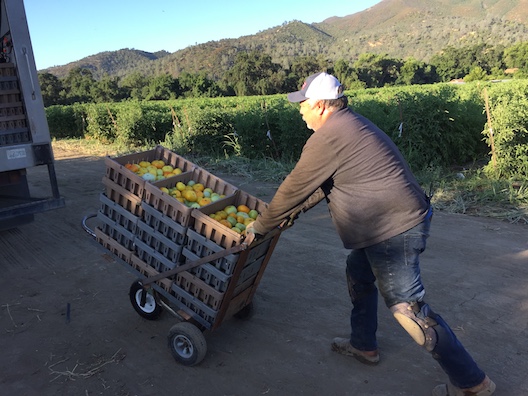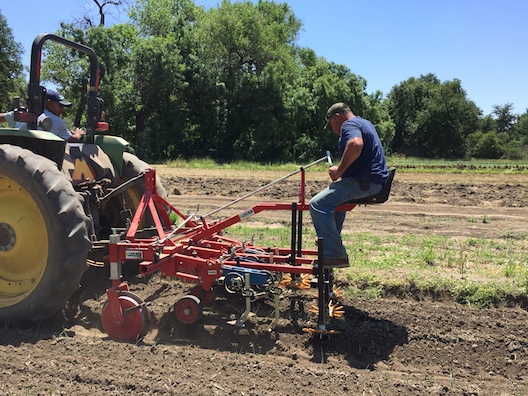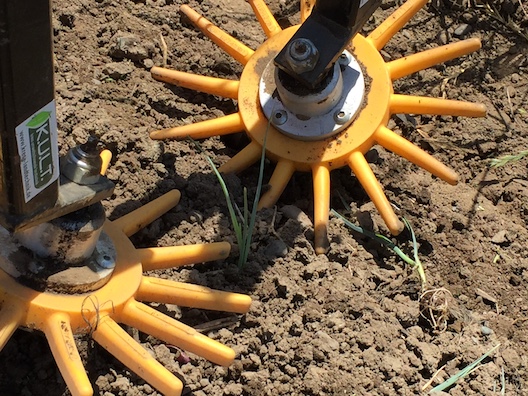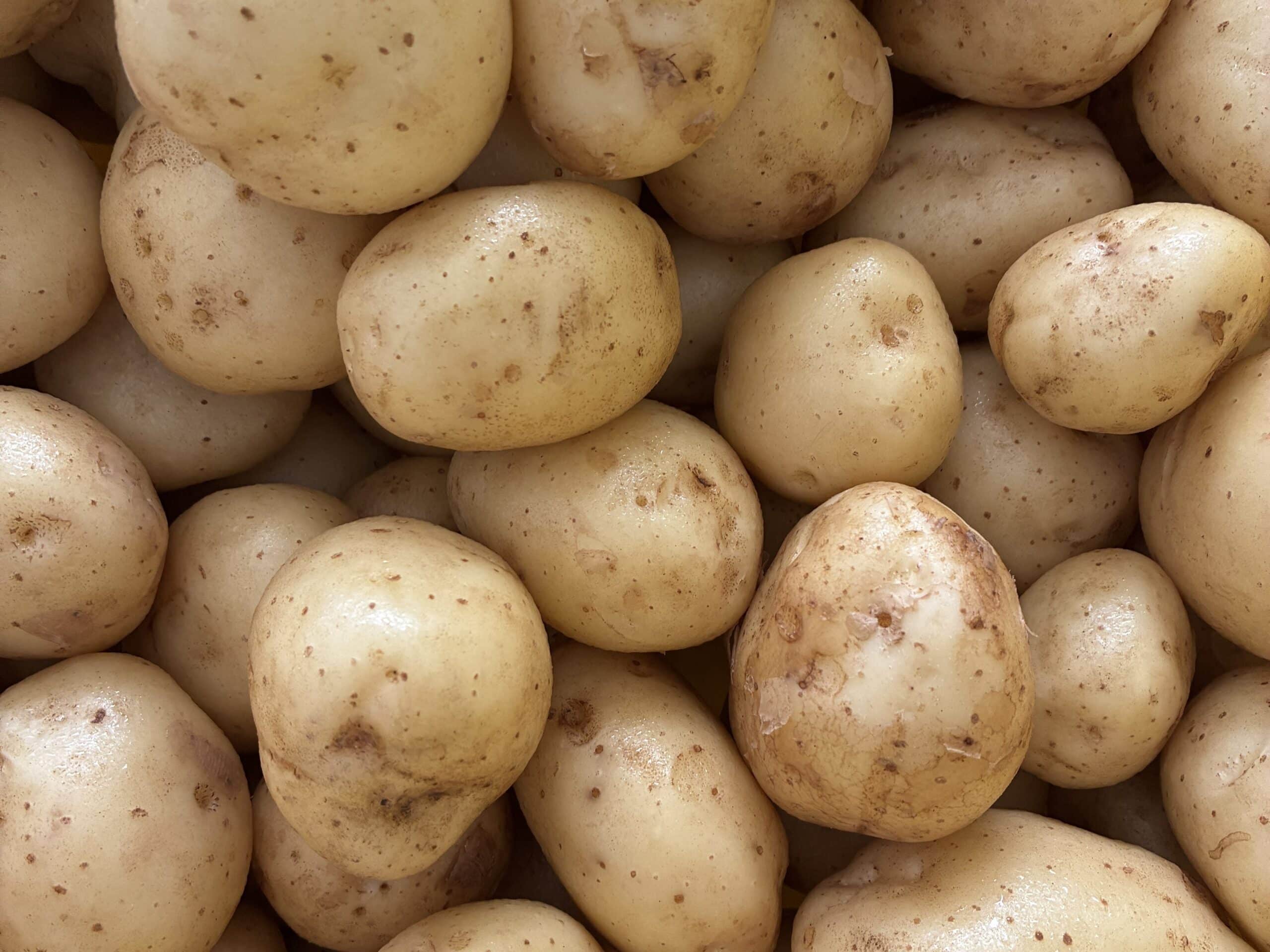
Potatoes, much like onions and garlic, seem to be ever present in stores, farmers markets, and even in our CSA boxes. Their ubiquity masks that, like most crops, they have specific growing and harvest seasons.
We grow two potato crops. We plant our spring crop in mid-February and the fall crop in mid-August. The fall crop often is ready starting in early November, only two and a half months. The spring crop will be ready starting in May/June, depending on when we were able to plant and the weather while they’re growing.
The first potatoes we harvest are new potatoes. These potatoes haven’t converted their simple sugars into starch and they have thin, delicate skins, meaning we have to be careful when handling them. We go through the field with an undercutter implement on the tractor, a bar that goes below the plant to loosen the soil and lift the potatoes closer to the surface (see this video for an example) where they can be picked up by our harvest crew.
The rest of the potatoes aren’t harvested this way. Instead, once the potatoes have reached the right size, we mow the plants, terminating their growth, then we wait one to three weeks for the skins to set. Once the skins have set, we can use a mechanical harvester, a potato digger! It would be too rough on new potatoes.
[Read more…]